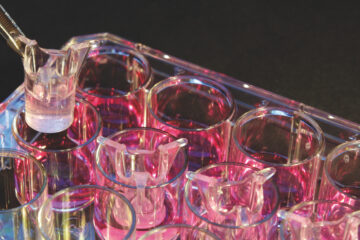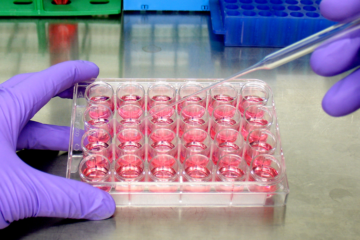The antioxidant potential (AOP) of the skin is well-known as a decisive factor in skin age.
It is known that external aggressors such as stress and solar radiation induce biochemical changes and changes in free radicals, affecting the antioxidant capacity of skin cells. Since AOP is affected, skin aging can be accelerated, an unwanted effect. In this way, many cosmetic ingredients exploit actives that promote the antioxidant potential and protect against premature aging of the skin.
These potentials can be exploited as efficacy claims, promoting a significant market differential for cosmetic products. In this article, we will explore in more detail how these effects can be validated.
Gene expression
Through molecular techniques, it is possible to evaluate the gene expression of genes that modulate antioxidant action.
The RT-qPCR technique, reverse transcription quantitative real-time PCR, combines RT-PCR with qPCR to enable the measurement of RNA levels through the use of cDNA in a qPCR reaction, thus allowing rapid detection of gene expression changes. The dynamic of this technique is illustrated in the following figure:

To identify the antioxidant capacity of a cosmetic ingredient, for example, it is necessary to evaluate the gene expression of the central genes involved in its activity, namely: SOD1, CAT, GPx1, and NRF2. This evaluation can be performed using the RT-qPCR technique.
Oxidative damage evaluation
Oxidative stress is defined as an imbalance between free radicals and antioxidants in the body and is therefore directly related to skin aging.
Some effects on lipids and proteins are closely linked to oxidative stress, the main ones being: protein carbonylation, lipid peroxidation, and protein glycation.
Protein carbonylation
Protein carbonylation is considered one of the most harmful irreversible oxidative protein modifications, and consequently, one of the main features of disorders related to oxidative stress. Thus, the measurement of protein carbonyl is extremely relevant for assessing the extent of oxidative stress in the context of cellular damage and skin aging, as well as other disorders related to cellular aging.
Lipid peroxidation
Lipid peroxidation is oxidative damage that affects cell membranes, lipoproteins,and other lipid-containing molecules under oxidative stress conditions. Cell membrane lipids often represent substrates for an oxidative attack. Therefore, lipid peroxidation is a chain reaction created by free radicals that influence unsaturated fatty acids in cell membranes, resulting in oxidative damage.
Free radicals are initiators and terminators of lipid peroxidation processes. When this reaction is activated, it continues autocatalytically with a progressive course, resulting in structural and functional changes.
Protein glycation
Protein glycation increases the susceptibility of proteins in general to oxidative damage. It plays a critical role in oxidative processes involving decompartmentalized transition metals and a variety of low molecular weight reducing agents, also contributing to cellular aging.
Understanding oxidative stress through the molecular observation of these three effects, therefore, is extremely relevant in the assessment of skin aging. For this evaluation Oxidative stress can be measured indirectly by measuring the levels of DNA/RNA damage, lipid peroxidation, and protein oxidation/nitration, rather than a direct measurement of reactive oxygen species (ROS).
As noted, the assessment of antioxidant capacity and skin aging are closely linked and can be performed by cutting-edge molecular techniques, without the use of animals. Identifying the antioxidant potential and protection against skin aging in ingredients and cosmetic products can be explored as efficacy claims and play a significant market differentiator.
Author: Carolina Barizan, Biomedical Scientist – Marketing Analyst, Crop Biolabs
Learn more about Crop Biolabs, our antioxidant capacity and skin aging tests and other services for cosmetics ingredients: https://cropbiolabs.com.br/




